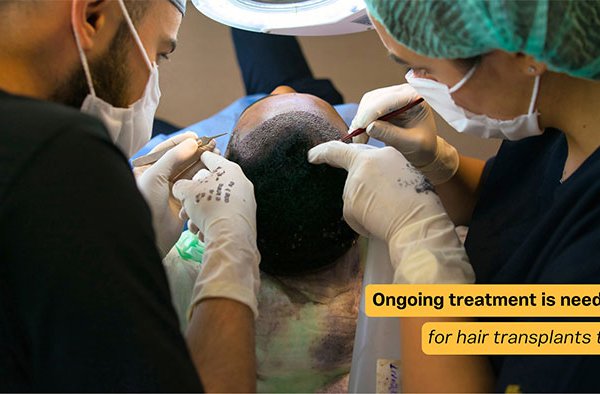Everything You’ve Ever Wanted To Know About Hair Transplant Surgery
For those who experience hair loss and balding, hair transplant surgery can seem like a magical unicorn.
Why a magical unicorn?
The idea of a magical unicorn is alluring, mysterious and full of promise. But imagine if you literally came face-to-face with a magical unicorn and the horn on its head. There is something slightly frightening about the unicorn concept, and so it is with hair transplant surgery.
But this is largely fear of the unknown. A solid understanding of hair transplant surgery – what it involves, what it feels like, what happens afterwards – will help alleviate this.
It is important to note that no matter what, hair transplant surgery is very much a last solution if nothing else works.
Why do it?
Whether it’s hereditary (first it was the barely noticeable hair thinning, then it was the very noticeable balding, followed by the dispirited combover and possibly the final shave), or due to an illness or accident, most people who go through loss of hair also experience loss of confidence.
There are myriad treatments for hair loss. Early stage hair loss paths begin with a treatment like Ashley & Martin’s RealGROWTH, which combines supplements, medications and treatments, among other things. Hair transplant surgery lies beyond these treatments, restoring hair in a more targeted manner. It’s a solution for anyone with a scalp less responsive to initial treatments.
The surgery
A typical hair transplant surgery involves a strip of skin cut out from the back into the head. The strip is typically 1 cm width by 25cm length. The open skin is stitched together with sutures.
The strip is then cut into cut into thousands of follicular units of 1, 2 and 3 which are grafted onto the head. The 1 pieces are placed on the front of the head, for a natural look, while the pieces of 2 and 3 are used on the top for fullness.
It is an intense surgery that entails anaesthetics and a few hours in the operating chair.
After the surgery
Patients need to be very careful post-surgery, until the grafts have taken correctly. For around 10 days after the procedure, extra care needs to be taken with the hair as any vigorous handling, like scratching the scalp, can cause the patient to permanently lose grafts. In most cases the hair will fall out approximately 30 to 60 days after a procedure, at which point the patient will be back to the starting point for around 4 months until the new hair grows out and then they are free to treat it like natural hair. Use of medical treatments or a Laser Cap for hair loss may alleviate this shedding process.
There will be noticeable scabbing on the scalp for about a week after the surgery, and it will be red for a month or so after. After the procedure you may experience swelling around the eyes.
There will be a scar from the surgery but in most cases it is hidden by the hair. Typically, after a few years the scar will fade and the hair can be cut short again. Some patients also experience a sensation on the back of their neck for a few years where the skin was removed – this too will diminish over time.
One of the biggest benefits of hair transplant surgery is that the restored hair will not recede again.
Conclusion
Think carefully about why you want hair transplant surgery; it’s not a first-round solution for hair loss, and it’s not for everyone, and that’s okay. There are myriad hair loss treatments available that will work for and appeal to different people in different ways. The specialists at Ashley & Martin can advise on when transplant surgery is the most viable solution. But in most cases, the initial solution will be found in non-surgical treatments.
25 Aug 2014

